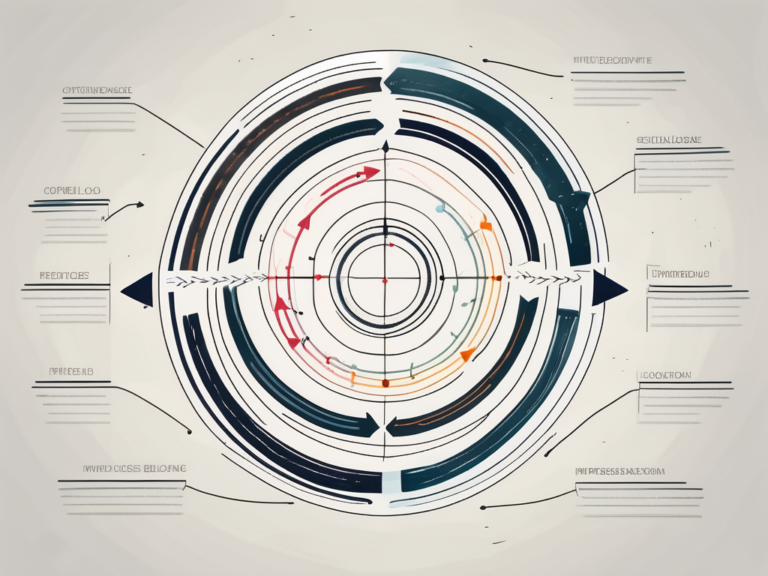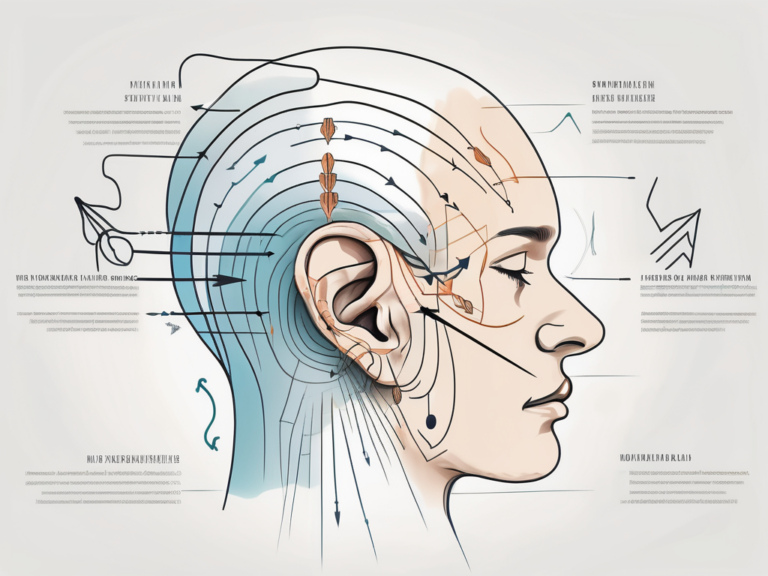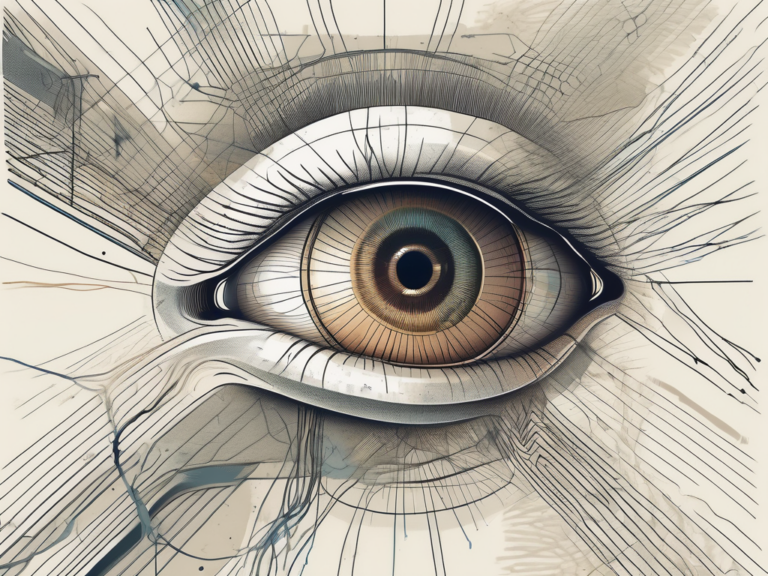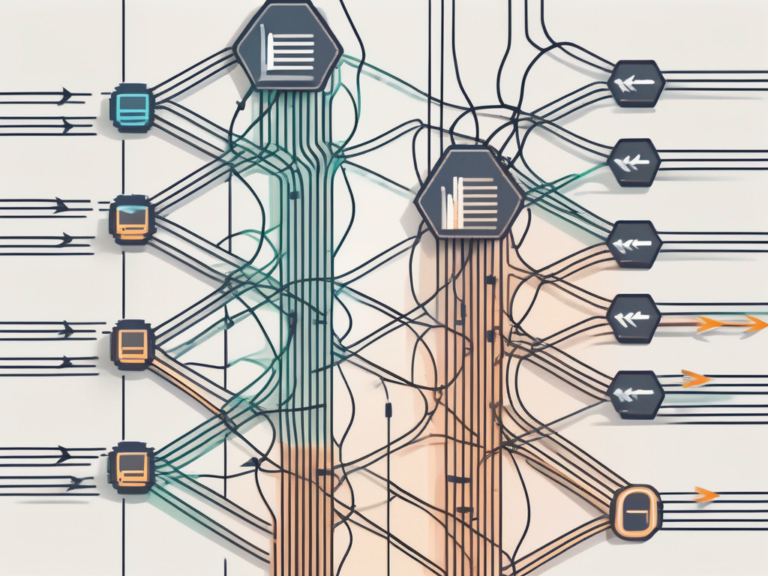The Importance of the Cochlear Nerve in Hearing Function
The cochlear nerve plays a crucial role in our ability to hear and perceive sound. Understanding the intricacies of this nerve is essential in comprehending the complexities of the auditory system. In this article, we will explore the anatomy of the cochlear nerve, its function in the auditory system, as well as the disorders related to it. Moreover, we will delve into the diagnosis, treatment options, and the bright future of cochlear nerve research.
Understanding the Cochlear Nerve
Before we dive into the specifics of the cochlear nerve, it is essential to have a basic understanding of its anatomy. The cochlear nerve is one of the major components of the auditory nerve, which is responsible for transmitting auditory information from the cochlea to the brain. It is primarily composed of sensory fibers that carry electric impulses generated by hair cells in the cochlea.
Anatomy of the Cochlear Nerve
The cochlear nerve is divided into two main branches: the auditory nerve and the vestibular nerve. The auditory nerve carries sound-related information, while the vestibular nerve transmits information related to balance and spatial orientation. Each branch consists of thousands of nerve fibers, which are organized into bundles known as fascicles.
The auditory nerve fibers are further categorized into two types: type I and type II fibers. Type I fibers directly connect the sensory hair cells of the cochlea with the auditory processing centers in the brain. Type II fibers, on the other hand, play a supporting role and help modulate the signals transmitted by the type I fibers.
The Role of the Cochlear Nerve in the Auditory System
The cochlear nerve is fundamental to the functioning of the auditory system. It is responsible for converting sound waves into electrical signals and transmitting them to the brain for interpretation. When sound waves enter the ear, they cause the hair cells in the cochlea to vibrate. These vibrations are detected by the hair cells and converted into electrical signals, which are then transmitted through the cochlear nerve to the brain.
Once the electrical signals reach the brain, they are processed and interpreted into meaningful sounds. This intricate process allows us to perceive and make sense of the variety of sounds that surround us.
But what happens if the cochlear nerve is damaged? Well, a condition known as sensorineural hearing loss can occur. This type of hearing loss is caused by damage to the cochlea, the auditory nerve, or the hair cells within the cochlea. When the cochlear nerve is impaired, the transmission of electrical signals to the brain is disrupted, resulting in a decreased ability to hear or understand sounds.
It is important to note that the cochlear nerve is just one piece of the complex puzzle that is our auditory system. The brain plays a crucial role in processing and interpreting the electrical signals sent by the cochlear nerve. Without the brain’s ability to decode these signals, the information transmitted by the cochlear nerve would be meaningless.
The Cochlear Nerve and Hearing Function
Having examined the anatomy and function of the cochlear nerve, let’s explore how it contributes to our overall hearing function. The cochlear nerve is responsible for two crucial aspects of hearing: sound transmission and sound interpretation.
How the Cochlear Nerve Transmits Sound
The transmission of sound through the cochlear nerve is a complex process that involves the precise coordination of the auditory system. As sound waves travel through the ear, they cause the hair cells in the cochlea to move. These movements generate electrical signals, which are then conducted by the cochlear nerve fibers towards the brain.
It is remarkable how the cochlear nerve can effectively transmit a wide range of sound frequencies to the brain. This ability allows us to hear everything from the softest whispers to the loudest explosions. The complex organization and synchronization of the cochlear nerve’s fibers enable this remarkable feat.
Imagine standing in a crowded room, trying to have a conversation. Despite the cacophony of voices and background noise, your cochlear nerve diligently filters out irrelevant sounds and focuses on the specific frequencies that carry the voice of the person you are speaking with. This selective transmission of sound is a testament to the intricate workings of the cochlear nerve.
The Cochlear Nerve’s Role in Sound Interpretation
While the transmission of sound is essential, the interpretation of sound is equally important in the process of hearing. The cochlear nerve plays a crucial role in this interpretation by transmitting the electrical signals generated by the hair cells to the auditory processing centers in the brain.
Once the electrical signals reach the brain, they undergo a series of complex processing and analysis. These processes involve the decoding of different aspects of sound, such as frequency, amplitude, and spatial location. The cochlear nerve’s contribution to these processes ensures that we can recognize and understand various sounds accurately.
Consider the experience of listening to a piece of music. As the melody flows through your ears, the cochlear nerve diligently transmits the intricate nuances of each note to the brain. The brain then processes these signals, allowing you to appreciate the harmonies, rhythms, and emotions conveyed by the music. Without the precise interpretation provided by the cochlear nerve, the beauty of music would be lost to us.
Disorders Related to the Cochlear Nerve
While the cochlear nerve functions seamlessly in most individuals, disorders affecting this crucial auditory component can have a significant impact on hearing function. Understanding the symptoms and common disorders related to the cochlear nerve is pivotal in early detection and effective management.
The cochlear nerve, also known as the auditory nerve, is a vital part of the auditory system. It is responsible for transmitting sound signals from the inner ear to the brain, allowing us to perceive and interpret sounds. When this nerve is damaged or impaired, it can disrupt the delicate process of hearing, leading to various symptoms and challenges.
Symptoms of Cochlear Nerve Damage
Cochlear nerve damage can present with a range of symptoms, which may vary depending on the severity and extent of the impairment. One of the most common symptoms is hearing loss, which can be mild, moderate, or severe. This hearing loss may affect one or both ears, making it difficult to understand conversations, enjoy music, or engage in everyday activities.
In addition to hearing loss, individuals with cochlear nerve damage may experience tinnitus, a condition characterized by a persistent ringing, buzzing, or hissing sound in the ears. This phantom noise can be incredibly bothersome and distracting, causing significant distress and affecting overall quality of life.
Furthermore, cochlear nerve damage can also lead to dizziness and balance disturbances. The cochlear nerve is closely connected to the vestibular system, which is responsible for maintaining balance and spatial orientation. When the nerve is compromised, it can disrupt the signals sent to the brain, resulting in feelings of dizziness, unsteadiness, and difficulty maintaining equilibrium.
If you experience any of these symptoms, it is crucial to seek medical advice promptly. Proper diagnosis and treatment can significantly improve your quality of life and prevent further deterioration of your hearing function. A thorough evaluation by an audiologist or otolaryngologist can help identify the underlying cause of your symptoms and guide appropriate management strategies.
Common Cochlear Nerve Disorders
There are several disorders related to the cochlear nerve, each with its own unique characteristics and implications. Some of the most common disorders include cochlear nerve tumors (acoustic neuromas), cochlear nerve inflammation (neuritis), and cochlear nerve degeneration.
Cochlear nerve tumors, although rare, can lead to hearing loss and other symptoms due to the compression of the nerve fibers. These benign tumors typically arise from the Schwann cells that surround the cochlear nerve, gradually growing and exerting pressure on the nerve itself. Early detection and intervention are crucial to prevent further damage and preserve hearing function.
Neuritis, on the other hand, refers to the inflammation of the cochlear nerve, which can cause sudden hearing loss and vestibular disturbances. This condition can be triggered by viral or bacterial infections, autoimmune disorders, or exposure to certain medications or toxins. Prompt medical attention and appropriate treatment can help alleviate symptoms and promote recovery.
Cochlear nerve degeneration can occur due to age-related changes or exposure to harmful environmental factors, leading to progressive hearing loss. As we age, the cochlear nerve fibers may gradually deteriorate, affecting the transmission of sound signals to the brain. Additionally, prolonged exposure to loud noises, certain medications, and medical conditions can also contribute to the degeneration of the cochlear nerve.
By understanding the symptoms and common disorders related to the cochlear nerve, individuals can take proactive steps towards early detection and effective management. Regular hearing screenings, adopting healthy hearing habits, and seeking timely medical attention can help preserve and protect this vital auditory component, ensuring a world full of vibrant sounds and meaningful connections.
Diagnosis and Treatment of Cochlear Nerve Disorders
Timely and accurate diagnosis of cochlear nerve disorders is critical in determining the most appropriate treatment approach. Various diagnostic techniques are available to evaluate the condition of the cochlear nerve and ascertain the underlying cause of the impairment.
When it comes to diagnosing cochlear nerve disorders, healthcare professionals employ a range of specialized techniques that delve deep into the intricacies of the auditory system. These techniques not only provide valuable insights into the condition of the cochlear nerve but also shed light on the underlying factors contributing to the impairment.
Diagnostic Techniques for Cochlear Nerve Disorders
Some common diagnostic techniques utilized in the evaluation of cochlear nerve disorders include audiometry, auditory brainstem response (ABR) testing, and magnetic resonance imaging (MRI). Audiometry involves a series of hearing tests that assess the overall hearing function and identify specific areas of impairment.
During an audiometry test, individuals are exposed to a range of sounds at different frequencies and volumes. By measuring their responses, healthcare professionals can determine the extent of the cochlear nerve’s involvement in the hearing loss. This information is crucial in formulating an effective treatment plan tailored to the individual’s needs.
ABR testing, on the other hand, measures the electrical activity generated by the cochlear nerve in response to auditory stimuli. By placing electrodes on the scalp and behind the ears, healthcare professionals can record the nerve’s response to sound. This test provides valuable information about the integrity and functionality of the nerve, helping in the diagnosis and management of cochlear nerve disorders.
MRI scans are often used to visualize the structures of the inner ear and identify any anatomical abnormalities impacting the cochlear nerve. These non-invasive imaging techniques allow healthcare professionals to have a detailed view of the auditory system, aiding in the identification of potential causes of cochlear nerve damage.
Treatment Options for Cochlear Nerve Damage
The management of cochlear nerve disorders depends on various factors, including the underlying cause, severity of the impairment, and individual patient characteristics. Treatment options may range from medical interventions to surgical procedures and hearing rehabilitation.
When it comes to treating cochlear nerve damage, healthcare professionals take a comprehensive approach that addresses both the physical and emotional aspects of the condition. In some cases, hearing aids or cochlear implants may be recommended to enhance hearing function. These devices bypass the damaged cochlear nerve and stimulate the auditory nerve directly, allowing individuals with cochlear nerve damage to regain a sense of sound.
Furthermore, therapies aimed at managing symptoms such as tinnitus or vestibular disturbances may be incorporated into the overall treatment plan. These therapies can help individuals cope with the challenges posed by cochlear nerve disorders and improve their overall quality of life.
It is important to note that the treatment approach for cochlear nerve disorders is highly individualized, with healthcare professionals working closely with patients to develop a plan that suits their unique needs and goals. By combining the latest advancements in diagnostic techniques with a multidisciplinary treatment approach, individuals with cochlear nerve disorders can receive the care and support they need to navigate the world of sound.
The Future of Cochlear Nerve Research
Exciting advancements in cochlear nerve research hold great promise for the future of hearing function restoration and management of related disorders. Researchers are continually exploring novel approaches to enhance the diagnosis and treatment of cochlear nerve impairments.
The cochlear nerve, a critical component of the auditory system, is responsible for transmitting sound signals from the inner ear to the brain for interpretation. As research in this field progresses, new insights are being gained into the intricate mechanisms that govern cochlear nerve function, paving the way for innovative treatment strategies.
Advances in Cochlear Nerve Treatment
Recent advances include the refinement of cochlear implant technology, which allows for greater precision and improved sound perception. Future developments may involve the use of regenerative techniques to repair damaged cochlear nerve fibers and restore hearing function naturally.
Furthermore, emerging technologies such as optogenetics, which involve the use of light to control nerve activity, show promise in enhancing the efficacy of cochlear nerve treatments. By harnessing the power of light-sensitive proteins to stimulate specific nerve pathways, researchers aim to fine-tune auditory signals and improve hearing outcomes.
The Potential of Cochlear Nerve Regeneration
Cochlear nerve regeneration research focuses on stimulating the regrowth and reconnection of damaged nerve fibers. Progress in this area could potentially revolutionize the treatment of cochlear nerve disorders, providing hope for individuals with severe hearing impairment.
Moreover, advancements in gene therapy hold immense potential for targeting specific genes involved in cochlear nerve function, offering personalized treatment options for individuals with genetic hearing disorders. By delivering therapeutic genes directly to the cochlear nerve, researchers aim to restore normal auditory function and mitigate the impact of hereditary hearing conditions.
In conclusion, the cochlear nerve plays a pivotal role in hearing function. Understanding its anatomy, function, and the disorders associated with it is crucial in the diagnosis, treatment, and management of hearing impairments. With ongoing research and advancements in the field, we can look forward to a future where cochlear nerve disorders can be effectively addressed, enabling individuals to experience improved hearing and a higher quality of life.






